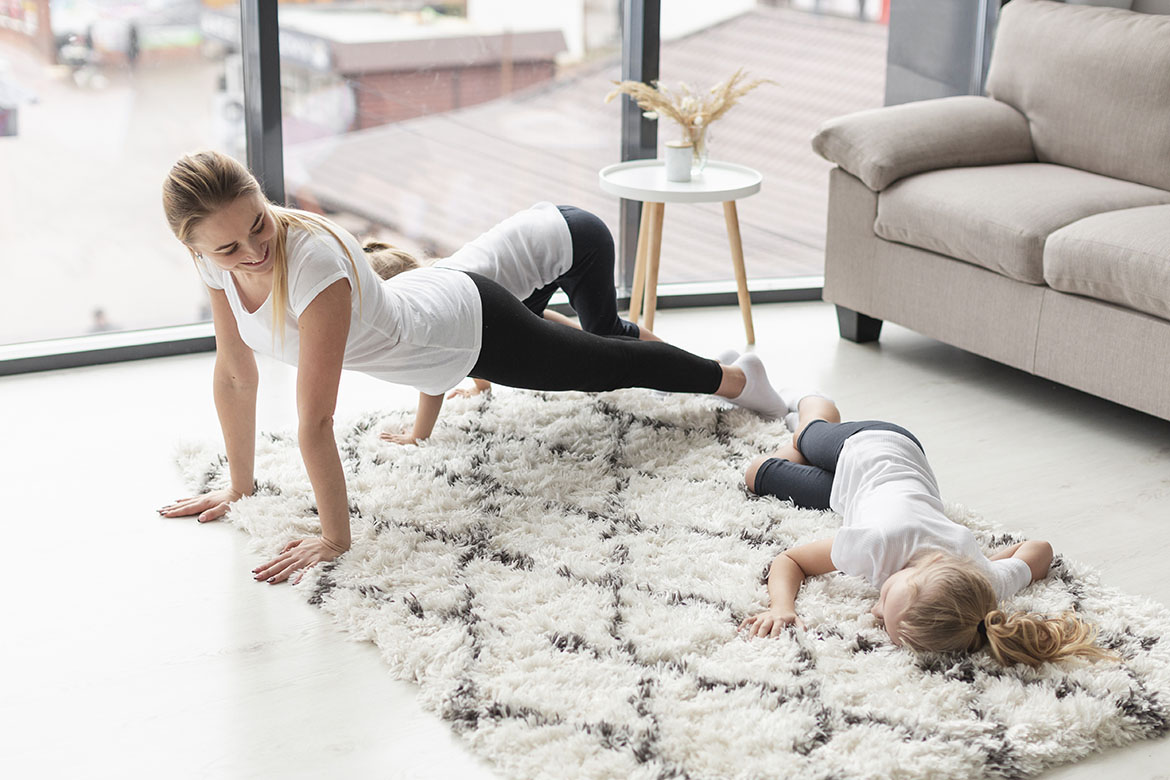By Louise Hurley, MumSafeTM TRAINER OF THE YEAR 2022
Do you find push ups hard to do? I’m going to let you in on a little secret… that’s because they are hard! Lot’s of women say that they are unable to do push ups, but in my experience as a fitness professional who predominantly works with mums, that’s because they miss the crucial foundational steps to building push up strength. The trick is to nail the basics then steadily progress from there, getting stronger as you go instead of always opting for doing mini push ups on your knees. Although my focus is on mums, the principles and techniques discussed here can benefit anyone aiming to get their first push up or increase repetitions and boost overall muscle and joint strength.
Push ups are a compound movement, meaning it works multiple muscle groups at once, which helps in building overall muscle strength and joint stability – key factors that support daily activities like lifting, carrying, and playing with your children. As women approach menopause and our bodies transition through this change, declining estrogen levels contribute to muscle loss and a decrease in bone density and joint strength. Big movements such as push ups can help maintain strong muscles, joints and bones.
Push ups primarily target the chest, shoulders, and triceps, but also engage your core, back, and even legs, so you really get the most bang for your buck with this exercise! So, ready to get started?
How to Get Your First Push Up
- Start with wall push ups
For beginners or those needing to manage intra–abdominal pressure (if you’ve recently been pregnant, for example), wall push ups are a fantastic starting point. Stand a few feet away from a sturdy wall, place your hands on the wall at shoulder height, and perform a push up motion by bending your elbows. Exhale as you push away from the wall. This modification reduces the load on your core and is a great starting point. If you can do ten of these, try the next level. - Progress to incline push ups
Once you’re comfortable with wall push ups, the next step is an incline push up. Use a bench or a sturdy table, positioning your hands on the elevated surface while the balls of your feet remain on the ground. This step increases the intensity slightly while still reducing the demand on your core compared to a standard push up. Aim to get your chest down to the same level as your hands and exhale as you push away, looking straight ahead. If you can do ten of these well with good control and getting your chest down to the surface that your hands are on, try doing them on an even lower surface or try the next level. - Try the first phase of the push up on your toes
Start in a plank position with your hands slightly wider than shoulder width apart. Slowly lower your body, keeping your elbows close to your torso, until your chest touches the floor. Your chest should touch the floor before your hips. This is called the eccentric phase of the movement. Then keep your knees on the floor as you push back up from the ground (the concentric phase). Essentially you are doing half a push up on your toes and then the other half on your knees. This is a great way to strengthen your chest muscles and build stability. When you can do at least five of these, have a go at full push ups. - Transition to the standard push up
Start as you did in the last step, but this time you’re going to try to push back up to the starting position with your knees off the floor, maintaining a strong and stable core throughout the movement. If you can do one, then great! Build up to two. Already got two in the bag? Awesome. Build up to three (and so on).
Special Considerations for Pregnant Women and Women with Abdominal Separation or Pelvic Organ Prolapse
For women who are pregnant or experiencing conditions such as diastasis recti (abdominal separation) or pelvic organ prolapse, it’s crucial to modify exercises to decrease intra–abdominal pressure. Here are some tips to help you keep your push ups in routine:
- Use supported surfaces
Opt for wall push ups or incline push ups as your primary exercises. These modifications reduce the load through the abdominal wall whilst still allowing you to maintain strength. For many pregnant women or those with diastasis recti or pelvic organ prolapse, these variations provide a more effective way to work on upper body strength while minimising pressure through abdominal connective tissue and pelvic floor. - Engage your pelvic floor and deep core
Before you begin a push up, take a moment to gently engage your pelvic floor muscles and begin the exhale. You can also imagine that you are trying to draw your hip bones closer together as you exhale (this can help you engage your deep core). This subtle activation can provide additional support and reduce the risk of further strain. Before adding in pelvic floor exercises to your routine I highly recommend seeing a pelvic health physiotherapist.
Louise Hurley, owner of Strong Mums and the Body Resilient Mum podcast is on a mission to help mums to return to exercise safely and realise that they are so much more than what their post–baby body looks like, at any stage of motherhood. Find out more at www.strongmums.com

